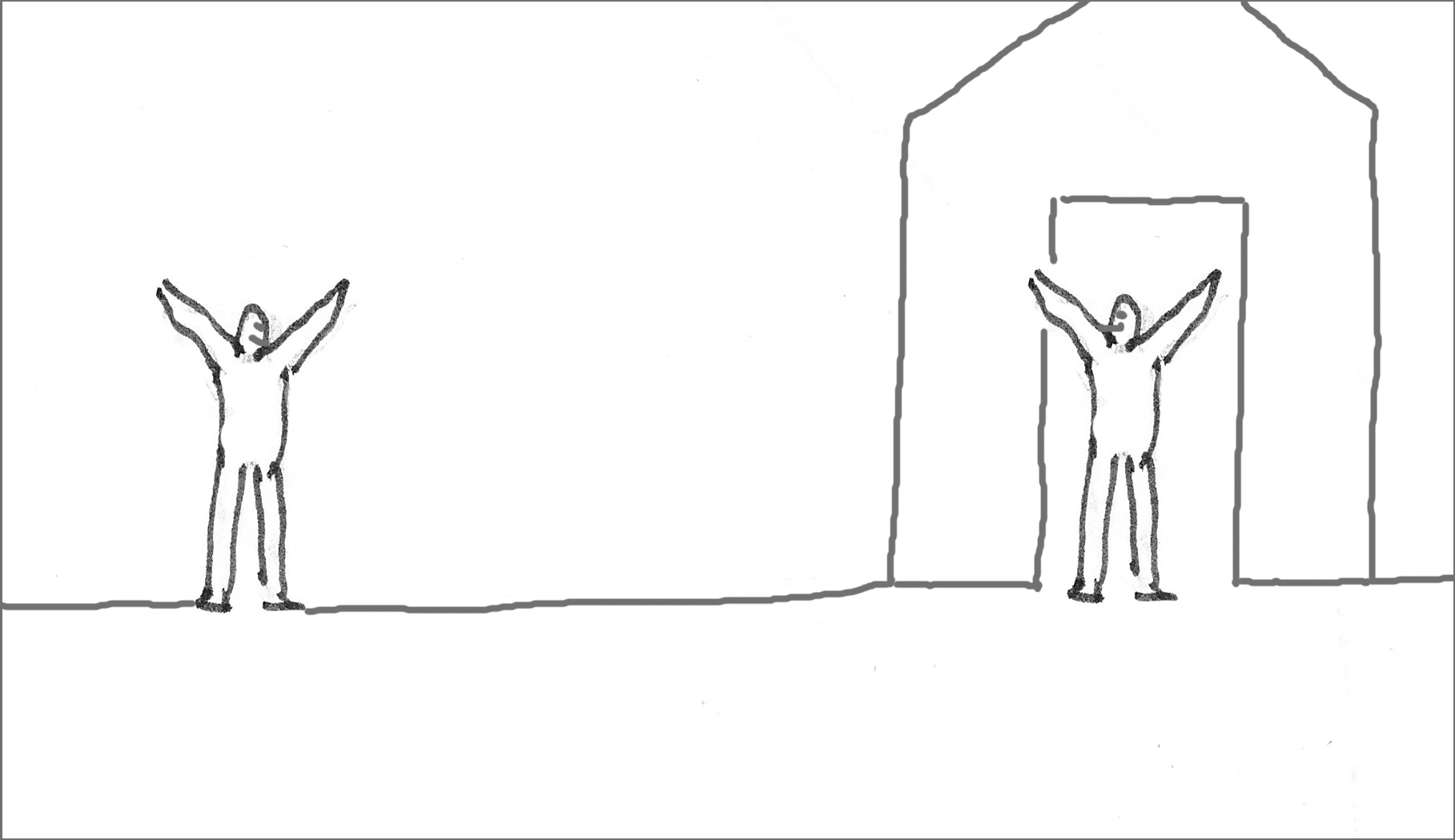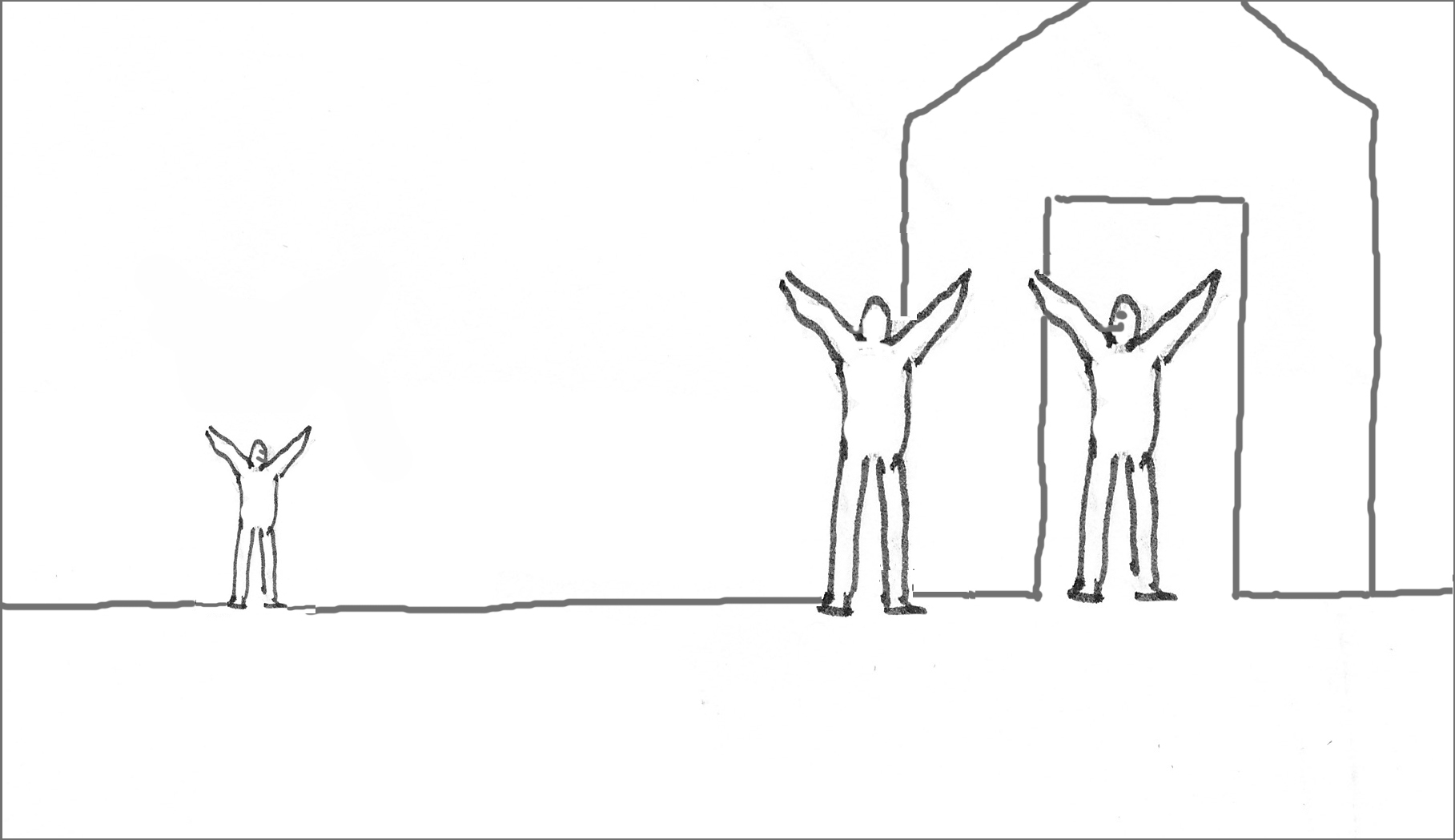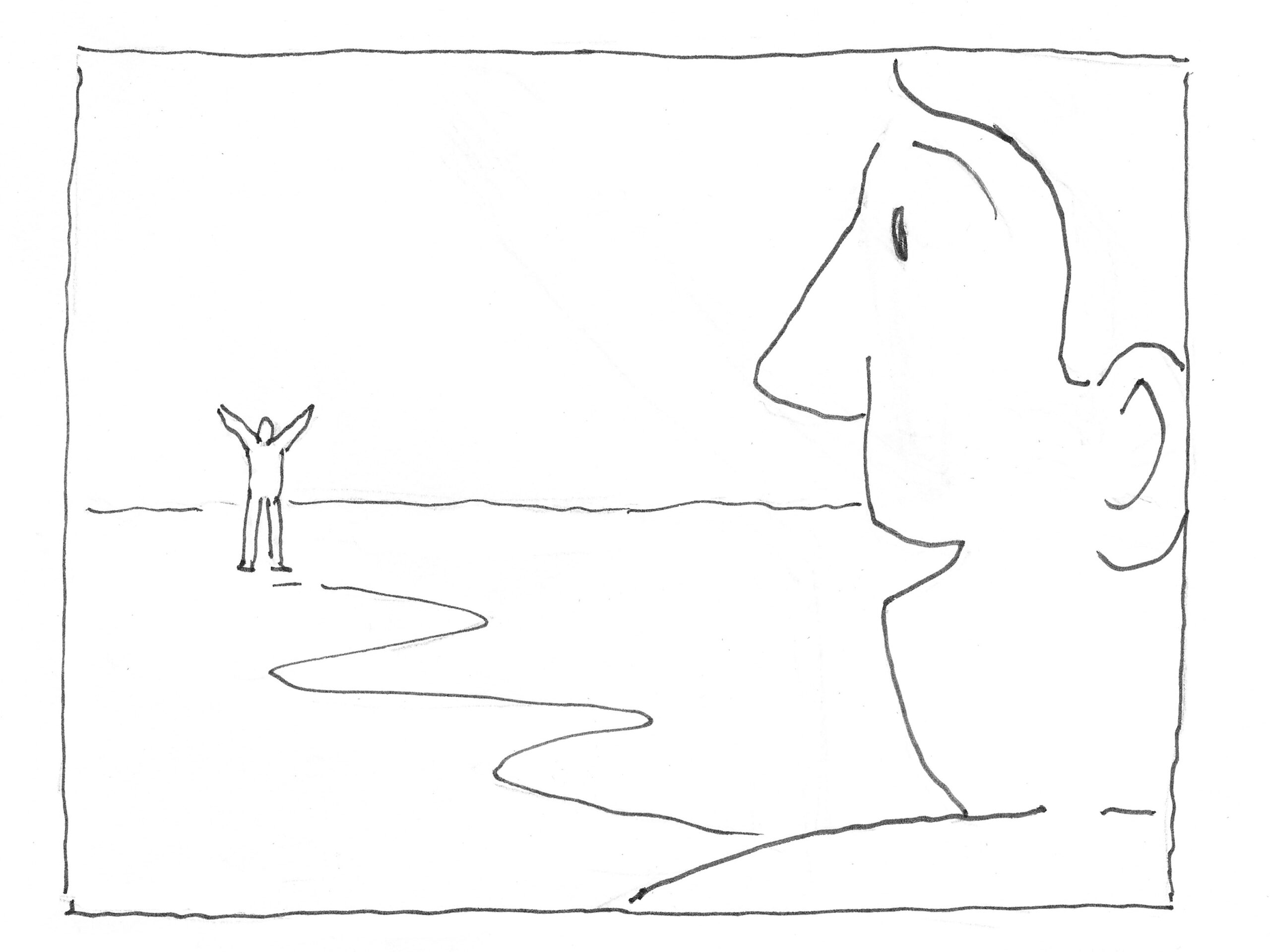Chapter 1 | NEAR AND FAR
A young man comes home after a long journey and waves from afar to his father who is standing at the door of his house. If you draw the men the same size, they are at the same distance from our pint of view (first example).

In the next drawing I made the son smaller. Now he looks further away than the father. The father had to move a bit to the left to be able to see his son in the distance.

The next drawing makes it even clearer who, from our perspective, is near and who is far away. The father is drawn so close that only part of his face fits into the frame. We now see his facial expression, happy and surprised! It’s as if we’re standing right behind him, looking over his shoulder. His son is waving from a considerable distance. The horizon line in the distance places both figures on the ground. The S-line shows the connection between the men even better.

For these types of drawings with depth, a frame is usually used (the line/edge around the drawing). A frame resembles a window through which we look outside or inside a space. Frames in photography and film have fixed aspect ratios such as 2:3, 4:3 or 16:9, but those kinds of precise ratios are not important for this lesson.
Exercise: Draw a farewell in a frame. This time show the scene from the perspective of the person leaving home.